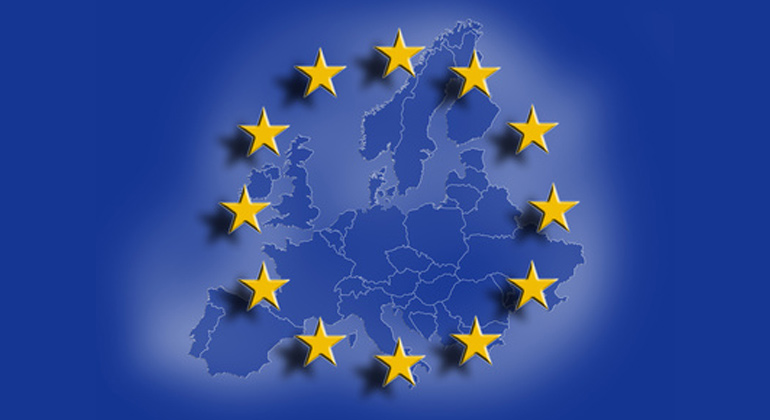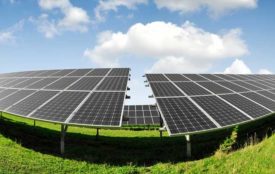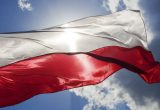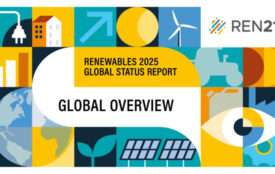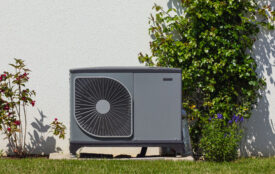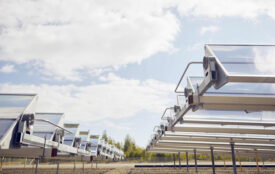Europe’s energy transition is well underway
The Second Report on the State of the Energy Union shows that the modernisation of the European Union economy and the transition to a low-carbon era are happening.
In terms of greenhouse gas emissions, energy efficiency and renewable energy, Europe is on track to reach its 2020 targets. To further drive this process, the Commission today is announcing a new Energy Union tour.
In line with its commitment to report annually on the state of the Energy Union, the European Commission is publishing today its Second State of the Energy Union Report. This report looks at the progress made since the publication of the first State of the Energy Union in November 2015. These reports are central elements to monitor the implementation of this key priority of the Juncker Commission.
Maroš Šefčovič, the Vice-President responsible for the Energy Union, said: “The Energy Union is about more than energy and climate alone; it is about accelerating the fundamental modernisation of Europe’s entire economy, making it low-carbon, energy and resource efficient, in a socially fair manner. We should also strengthen the Energy Union’s external dimension, to enhance the EU’s global leadership role. Now that a large part of the relevant legislative proposals are on the table, 2017 should be the year of implementation. This is the message that I will bring to Member States during the new Energy Union tour, which I will launch on 3 February”.
Miguel Arias Cañete, Commissioner for Climate Action and Energy, said: “Europe is well on track to meet its 2020 climate and energy targets. Despite the current geopolitical uncertainties, Europe is forging ahead with the clean energy transition. There is no alternative. And the facts speak for themselves: renewable energy is now cost-competitive and sometimes cheaper than fossil fuels, employs over one million people in Europe, attracts more investments than many other sectors, and has reduced our fossil fuels imports bill by €16 billion. Now, efforts will need to be sustained as Europe works with its partners to lead the global race to a more sustainable, competitive economy.”
Since the publication of the first State of the Energy Union, several trends in the EU’s transition to a low-carbon economy were continued and strengthened. The Commission will carry out further in-depth analysis of Member States’ policies, using the new Energy Union Tour throughout 2017.
For the Energy Union, 2016 was the year of delivery where the vision of the Energy Union Framework Strategy was further translated into concrete legislative and non-legislative initiatives, above all with the “Clean Energy for all Europeans” package presented on 30 November 2016.
The EU as a whole has continued to make good progress on delivering the Energy Union objectives, in particular on the 2020 energy and climate targets (see MEMO/17/162 and MEMO/17/163). It has already achieved its 2020 final energy consumption target. The same is true for greenhouse gas emissions: in 2015, EU greenhouse gas emissions were 22% below the 1990 level. The EU is also on track in the renewable sector where – based on 2014 data – the share of renewables reached 16 % of the EU’s gross final energy consumption. Another important trend is that the EU continues to successfully decouple its economic growth from its greenhouse gas emissions. During the 1990-2015 period, the EU’s combined Gross Domestic Product (GDP) grew by 50 %, while total emissions decreased by 22 %.
Following the conclusion of the Paris Agreement in December 2015, it was the swift ratification by the EU that enabled the entry into force of the first-ever universal, legally-binding global climate deal on 4 November 2016.
In a fast-changing geopolitical environment, a successful Energy Union is crucial to protect the long term economic interests and well-being of Europe and of Europeans. That is why work on the Energy Union in the past months has included a reinforced focus on energy diplomacy, designed to strengthen security of energy supply, to expand exports of EU low carbon technology solutions and to boost Europe’s industrial competitiveness.
In 2016, the Commission also presented a European low emission mobility strategy with a clear ambition: by mid-century, greenhouse gas emissions from transport should be at least 60 % lower than in 1990 and be firmly on the path towards zero, while ensuring the mobility needs of people and goods as well as global connectivity.
More information
- Second State of the Energy Union Communication and all accompanying documents adopted today can be found on the Commission’s website
- MEMO/17/162 on progress report energy efficiency
- MEMO/17/163 on progress report renewables
- For information about the 2017 Energy Union tour, consult the website of Energy Union Vice-President Maroš Šefčovič
